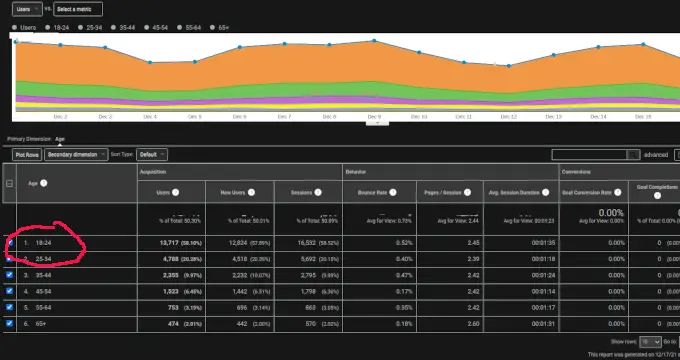How do you get an edge in this highly competitive world of blogging and trying to get your website to the greatest number of readers online? I share my tips on how to use data analytics by Google to enhance the performance of your website if you are a webmaster or even an enterprising blogger who has access to the back-end part of your website.
Having worked on different websites from drag-on-drop to CMS such as WordPress for almost 10 years, I gained insights from both the webmaster’s and bloggers point of view. As background to the reader on what I do so you will appreciate the level of expertise I have gained along this area, a brief introduction on who I am would help.
You may skip reading the next paragraph if you:
- don’t care who writes this article,
- are not a blogger who wants to improve and succeed in getting your articles read by millions or even billions of people worldwide,
- are not a curious marketer who wants to sell e-products or even physical products to the masses.
My Background as Webmaster and Blogger
My interests cut across many disciplines. I have written articles beyond my specialization so I’m a Jack of All Trades, Master of All (Just kidding!).
No, I’m not kidding. I never asked anyone to ghost write for me. Perhaps it’s the other way around.
Now, that’s another me. Always trying to keep a light mood to sustain my writing spree.
I’m both a webmaster by systematic self-study, a blogger, and a statistician. I write scientific articles but I love tinkering with web technology and blogging a lot on many topics that I find challenging.
Thus, I think three ways in my online activities: as webmaster and multi-topic blogger plus I use statistics to test my hypotheses. I think that’s a weird combination.
I am one of the unusual patients a doctor meets because I bring with me a graph to show my blood pressure pattern after I have done an analysis on the effect of exercise.
Using Data Analytics by Google in Analyzing Article Performance
So here’s what gives me confidence that my tips on data analytics by Google would be handy to like-minded peers:
- I write articles in this site using keywords that I am familiar with and even unfamiliar but interested,
- I use Google Data Analytics daily to monitor the traffic of articles published in Simplyeducate.me focusing on the keywords,
- I gain insights from my musings of data analytics by Google,
- I apply statistical analysis on the steps I make to see if my strategy works or not, and
- I tweak my articles whenever needed to gain better traffic.
I have seen favorable changes in the website that I have maintained for more than 9 years in terms of
1) increase in traffic, and
2) quality of traffic.
So if you want to succeed online as a webmaster and a blogger, you have to look not only to the number of views or traffic but also the quality of views.
My measure of success is the recent increase in monthly revenue from 5.9% to 83.9% in a span of two months given the same or less website traffic and the same monetization strategy. I realized that the focus on traffic quality is better than quantity. I get the same or even lower web traffic but I earn much better.
The number of views is easy to see in data analytics by Google but judging the quality of the views is another thing. The use of data analytics is worth your time for better website performance. For established websites, webmaster-blogger or writer collaboration is a must.
Now here are the three important tips on how to make use of Google’s data analytics function to your advantage.
Don’t read further if you don’t believe me. Either you’ll regret that you have not read it, or you miss half of your life as a webmaster and/or blogger.
Four Important Tips on Data Analytics by Google
I align the following tips on the five things I listed a while ago. Those things refer to use of keywords, monitoring web traffic using data analytics by Google, insights, statistical analysis, and tweak to articles.
I discuss each of these three critical points in data analytics to give you a clearer picture on what I mean.
1. Use relevant keywords that match user needs
The use of keyword in getting that much coveted traffic of web users still does it all. A diligent search for well-searched keyword using Google Trends pays off. Never neglect to find a phrase that users type in the search box.
Google has automated suggestions to users when they begin to type. Look for the relevant keyword and focus your topic on that specific phrase. The longer the keyword, the better. Avoid single word keyword unless it’s a very unique one that nobody has written about.
It’s best to write about something you are most familiar with than trying to write for a high paying keyword that very few people look for. The idea of service to the information needs of the users along areas that you are familiar or are an expert makes writing experience a liberating one.
You need not use keywords that high cost-per-click (CPC) value because you can leverage high traffic articles to point to your high CPC article or site. But if you prefer so, a keyword analytics tool like that provided by SEM Rush is indispensable in getting high CPC keywords. Find the keywords that work and are in keeping with the theme of your website.
Indeed, you are fortunate if you hit on an article that has a high CPC. I had such surprises, getting a CPC of more than $1,500 (!) on random instances that I monitor data analytics by Google. How I wish I had a thousand views of that high CPC article in one day.
If you are a beginning blogger, you can make use of good insights on web traffic of specific keywords from Google Trends. Match that up with actual keyword search in Chrome and you’re good to go.
2. Identify the browsers that your users prefer
Looking at data analytics by Google on browser and OS performance this month, Chrome is used by most of internet surfers at 78.35%, followed by Safari at 7.99%, and Edge at 5.42%. It’s easy to discern, at least on this website which I have backend access as webmaster, that this data has something to do with different types of users and gadgets.
Preference for browsers, or browsers serving as default for some OS like Safari for Apple users and Microsoft Edge for Windows 10 or 11 users, suggest different ways by which users access information online. These browsers have different algorithms thus list a different set of links for users to choose from.
Hence, if your article in Chrome makes it at the top of the first set of articles given a particular keyword, that article of yours is nowhere to be found or at the bottom of Safari’s and Edge’s listing.
Thus, bloggers must bear in mind the type of users who 1) prefer the browsers, 2) use the browsers as default, and 3) deal with different age groups.
3. Identify user types to direct traffic
Here’s my analysis of the type of users based on the data analytics by Google on Simplyeducate.me users. I correlated mobile user type with browser or technology at work in their gadgets.

Younger Android and Chrome users
Android or chrome users most likely belong to the younger generation because the percentage of users at the 18-24 and 25-34 age ranges are 58.10% and 20.28%, respectively. The total percentage of 78.38% of this age group corresponds well with the 78.35% of Chrome users pointed out in the previous section.
Chrome traffic consists mostly of the younger generation. I learned this while reading a blog about keyword optimization. The author mentioned about the importance of traffic quality.
The conclusion: Don’t worry about the number of viewers. Think of the Who in your web traffic.
Don’t worry about the number of viewers. Think of the Who in your web traffic.
Older Edge or Bing users
I’ve read in one of the articles written by an expert on SEO that Edge or Bing users consist of more mature, more educated and willing to pay individuals. Hence, they have a greater potential to buy more of keyword-directed products displayed as ad in your article.
I support this idea because when I started to submit the urls of my newly published articles using Bing Webmaster Tools, the website significantly earned more. Before, I didn’t bother to optimize the content according to Bing guidelines. It pays to do so given the different set of users send to your website—the more mature sectors of society.
One explanation I can offer is that the older generation tend to buy the ubiquitous windows laptop or desktop with the Microsoft operating system as part of the package. And Microsoft Edge insists and persists as a default browser closely integrated in the operating system.
Even if you attempt to remove Edge and try to replace it with Chrome as your preferred browser, it bounces back after an update. Or some of the software applications like MS Office will not work unless you keep on repairing the installation. A quick repair or an online repair brings back Microsoft Edge as the default browser.
I believe this is an aggressive marketing tactic to bring in more Bing or Edge users to the Microsoft fold. The younger generation, being techie than the older generation, might want to challenge this default function. But for the older generation, there is a great probability that they will leave the browser as it is. Let the default stay.
High-end Safari users
Well, I believe there’s no need to expound more on the Safari users as this is the default browser of Apple products. Everyone knows that Apple users tend to have higher purchasing power as Apple products lie at the high-end pie of electronic gadgets.
Surprisingly, iPhone users make up 11.68% of the web traffic in Simplyeducate.me, out of the 50.62% of mobile users in the site.
4. Rewrite articles that get read longer
If you want to optimize on your old articles given your new set of SEO skills, look for articles that get read longer. Those articles surely captured the interest of the readers. Chances are, those articles are not search engine optimized if you have written them five years ago.
Longer time devoted to your articles indicate that the article’s hook, meta description, or content above the fold appealed to the readers. It’s an opportunity to exploit.
I hypothesized that old articles that have high time duration (exceeding one minute) as data analytics by Google reveal will perform better by following the recommendations of an updated SEO tool such as Monster Insights, RankMath, or Yoast SEO.
I resurrected the old articles I wrote and applied the recommended SEO tips. Indeed those articles get read more than the unoptimized one. In many instances, those articles get daily web traffic compared to the sporadic traffic two reads in two weeks before optimization.
Take Home Message
Spending time on data analytics by Google is a time well-spent because you can gain useful insights to significantly improve website performance. Choose the parameters you are interested in and try a few tweaks. You will be surprised at the results—better revenue to keep your website afloat and on top of 1.7 billion websites making up the world wide web.
Employing incisive data analytics by Google produce valuable insights to help you succeed in your online venture. Exploratory data analysis applied on existing data yields important feedback for webmasters and bloggers alike.
Have a Merry Christmas!
© 2021 December 24 P. A. Regoniel


